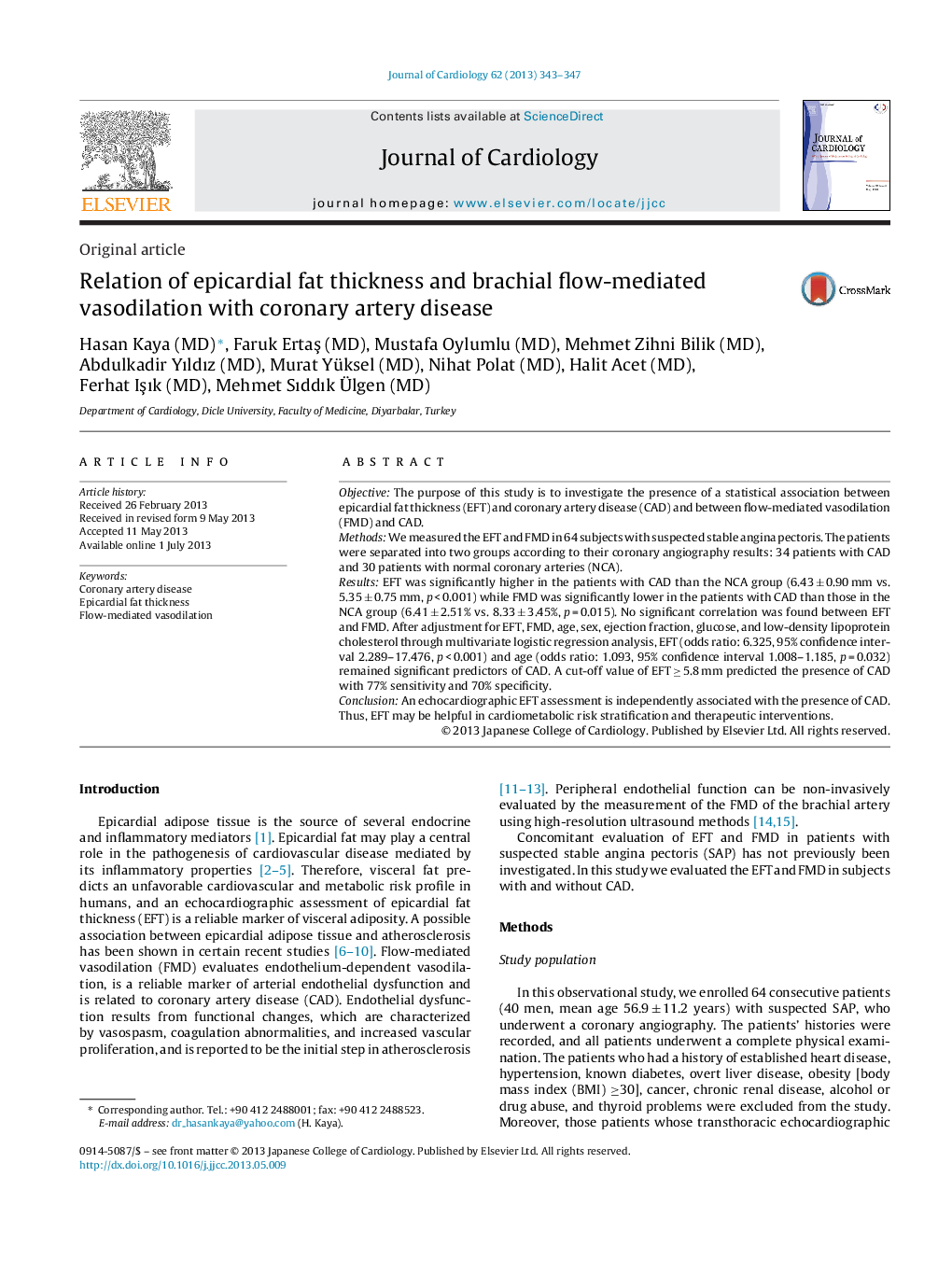| Article ID | Journal | Published Year | Pages | File Type |
|---|---|---|---|---|
| 2963097 | Journal of Cardiology | 2013 | 5 Pages |
ObjectiveThe purpose of this study is to investigate the presence of a statistical association between epicardial fat thickness (EFT) and coronary artery disease (CAD) and between flow-mediated vasodilation (FMD) and CAD.MethodsWe measured the EFT and FMD in 64 subjects with suspected stable angina pectoris. The patients were separated into two groups according to their coronary angiography results: 34 patients with CAD and 30 patients with normal coronary arteries (NCA).ResultsEFT was significantly higher in the patients with CAD than the NCA group (6.43 ± 0.90 mm vs. 5.35 ± 0.75 mm, p < 0.001) while FMD was significantly lower in the patients with CAD than those in the NCA group (6.41 ± 2.51% vs. 8.33 ± 3.45%, p = 0.015). No significant correlation was found between EFT and FMD. After adjustment for EFT, FMD, age, sex, ejection fraction, glucose, and low-density lipoprotein cholesterol through multivariate logistic regression analysis, EFT (odds ratio: 6.325, 95% confidence interval 2.289–17.476, p < 0.001) and age (odds ratio: 1.093, 95% confidence interval 1.008–1.185, p = 0.032) remained significant predictors of CAD. A cut-off value of EFT ≥ 5.8 mm predicted the presence of CAD with 77% sensitivity and 70% specificity.ConclusionAn echocardiographic EFT assessment is independently associated with the presence of CAD. Thus, EFT may be helpful in cardiometabolic risk stratification and therapeutic interventions.
